Nestled amidst the dramatic limestone peaks of Ninh Binh, Hoa Lu Imperial City was once the cradle of Vietnam’s earliest dynasties. As the country’s capital during the 10th and 11th centuries, it served as a political, economic, and military hub. Although the capital was later relocated to Thang Long (now Hanoi), Hoa Lu remains an essential part of Vietnam’s history, attracting visitors with its ancient temples, royal vestiges, and scenic landscapes. At Pioneer Sail Travel, we believe in providing travelers with meaningful experiences, and this guide will help you uncover all the hidden stories and cultural treasures within the Hoa Lu Imperial City.
The History and Legacy of Hoa Lu Imperial City
Hoa Lu Imperial City dates back to 968 AD, when Dinh Bo Linh declared himself Emperor Dinh Tien Hoang and unified the country. As the first capital of Vietnam, Hoa Lu was chosen for its strategic location. The city lies in a natural fortress of limestone mountains and river networks, making it difficult for invaders to penetrate. This combination of natural defense and political ambition allowed Hoa Lu to become a secure and prosperous center of power.
The Early Dynasties: Dinh and Le
Under the Dinh dynasty, Hoa Lu flourished, with palaces, temples, and royal residences built to reflect the power of the imperial court. However, after Emperor Dinh Tien Hoang was assassinated, General Le Hoan seized the throne and established the Early Le dynasty. He continued to govern from Hoa Lu and focused on repelling external invasions from the Chinese Song dynasty.
A 2023 study from the Vietnam Academy of History describes Hoa Lu as not only the birthplace of Vietnamese statehood but also a symbol of resilience. Under both the Dinh and Le dynasties, the city played a critical role in stabilizing the country and shaping its early governance system.
| Event | Year | Significance |
| Dinh Bo Linh proclaims himself Emperor | 968 AD | Marks the birth of Vietnam’s first centralized state |
| Le Hoan ascends the throne | 980 AD | Defends Hoa Lu from the Song invasion |
| Capital relocation to Thang Long | 1010 AD | Ends Hoa Lu’s political dominance |
The Proclamation to Relocate the Capital to Thang Long

In 1010 AD, Emperor Ly Thai To issued the Proclamation Relocating the Hoa Lu Capital to Thang Long, marking a pivotal moment in Vietnamese history. Thang Long (modern-day Hanoi) offered better opportunities for trade and expansion, symbolizing a new chapter in Vietnam’s development. With the relocation of the capital, Hoa Lu Imperial City transformed from a political center into a cultural and spiritual hub, its temples and palaces serving as enduring monuments to the country’s early rulers.
Even today, visitors to the site can see the remnants of Hoa Lu’s former glory through ancient walls, stone carvings, and restored temples. Archaeological efforts continue to uncover new artifacts that offer fresh insights into life in the imperial capital, with recent digs (2022-2023) uncovering bronze statues, ancient coins, and ceramic fragments.
Exploring the Hoa Lu Royal Palace and Other Key Sites
One of the highlights of visiting the Hoa Lu Imperial City is exploring the Hoa Lu Royal Palace, which served as the heart of the imperial court. While the palace itself is now in ruins, parts of the foundation and original layout are still visible, offering visitors a glimpse into the grandeur of the past. Restoration efforts have also helped recreate sections of the palace, including gardens, ceremonial halls, and defensive walls.
Hoa Lu Royal Palace – A Glimpse into Imperial Life

The Hoa Lu Royal Palace was once a sprawling complex that housed the emperor, his family, and key officials. Visitors can now explore the grounds and reconstructed areas, including the main courtyard and palace gates, which showcase traditional Vietnamese architecture. Some artifacts recovered from the site, including statues and ceremonial tools, are on display in local museums, providing additional insight into imperial life.
A traveler on TripAdvisor noted: “Walking through the ruins of the palace felt surreal. Even though much of it is gone, the sense of history is still very much alive.”
| Section | Details |
| Main Courtyard | Used for imperial ceremonies and gatherings |
| Palace Gates | Reconstructed from historical blueprints |
| Admission Fee | 3-5 USD per person |
Temples of Dinh Tien Hoang and Le Dai Hanh
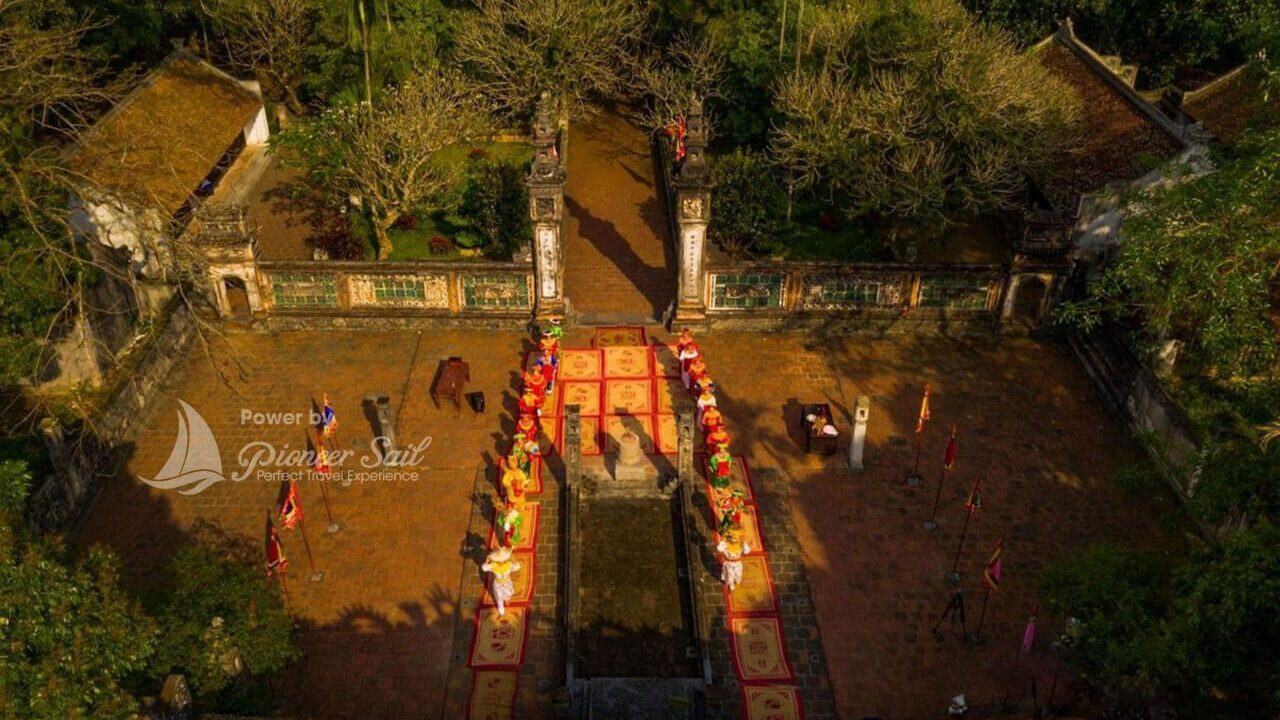
The Dinh and Le Temples are two of the most important landmarks within the Hoa Lu Imperial City, dedicated to the rulers who shaped Vietnam’s early history. These temples are peaceful sanctuaries, surrounded by gardens and ancient trees, offering a tranquil atmosphere for reflection and prayer.
Dinh Temple, built to honor Emperor Dinh Tien Hoang, features wooden statues of the emperor and his sons, along with elaborate stone altars used for worship. The temple’s carved pillars and decorative motifs reflect the artistic style of the 10th century.
Not far from the Dinh Temple lies the Le Temple, dedicated to Emperor Le Dai Hanh. The Le Temple is known for its stone carvings depicting historical battles, along with sacred altars where locals offer incense in honor of the emperor.
| Temple | Highlight | Best Time to Visit |
| Dinh Temple | Wooden statues of Emperor Dinh and his sons | Early morning |
| Le Temple | Stone carvings of ancient battles | Late afternoon |
Both temples are open from 7:30 AM to 5:30 PM, and the admission fee is included in the general ticket for Hoa Lu Imperial City.
The Citadel Walls and Tombs of Hoa Lu
The citadel walls that once surrounded Hoa Lu Imperial City were made from limestone blocks, blending seamlessly with the natural karst landscape. While many parts of the walls have eroded over time, several sections remain intact, giving visitors a sense of the city’s defensive strength. Walking along these walls offers panoramic views of the surrounding countryside, including rice fields, rivers, and towering limestone peaks.
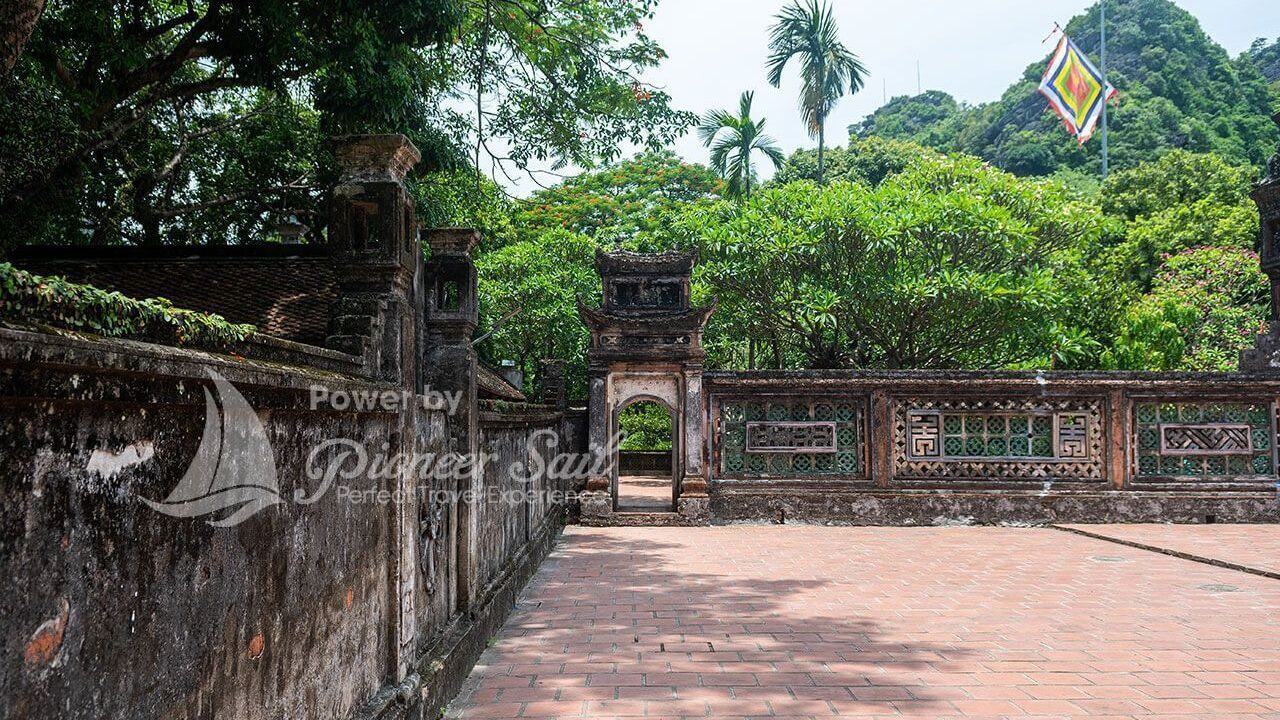
Within the grounds, visitors will also find the tombs of Dinh Tien Hoang and Le Dai Hanh, resting peacefully among lush greenery and limestone hills. These tombs are simple but powerful reminders of the imperial legacy, drawing visitors who come to pay their respects to the early rulers of Vietnam.
A visitor review on Google reads: “Exploring the old citadel walls was one of my favorite parts. The views were stunning, and it felt like stepping back into a different time.”
These sites, combined with the Hoa Lu Royal Palace, create a powerful narrative of Vietnam’s early dynasties, making a visit to the Hoa Lu Imperial City both an educational and emotional journey.
Hoa Lu Imperial City Opening Times, Tickets, and Travel Tips for 2024
Knowing when to visit and how to plan your itinerary ensures you get the best experience at Hoa Lu Imperial City. As part of a UNESCO-protected area, the site offers a range of activities, from historical exploration to scenic tours through limestone landscapes. Here’s everything you need to know to plan your visit.
Opening Times and Ticket Prices
The Hoa Lu Imperial City complex is open daily from 7:30 AM to 5:30 PM. This gives visitors ample time to explore both the Dinh and Le Temples, citadel walls, and tombs. Tickets can be purchased at the entrance or through travel operators, with prices starting at 3-5 USD per person.
| Attraction | Opening Hours | Admission Fee (USD) |
| Dinh and Le Temples | 7:30 AM – 5:30 PM | Included in main ticket |
| Cycling Tours (Optional) | Anytime | ~8-15 (bike rental) |
Pro Tip: If you’re traveling during peak season (October to April), it’s best to arrive early in the morning to avoid crowds and enjoy the peaceful temple grounds.
How to Get to Hoa Lu Imperial City
Hoa Lu Imperial City is located about 90 kilometers south of Hanoi, making it a popular day-trip destination. There are several convenient ways to reach the site.
Travel Options from Hanoi
- Private Car or Taxi: The most comfortable option, taking 2 hours, with roundtrip prices between 100-150 USD.
- Bus from Hanoi to Ninh Binh: Affordable, with prices starting from 8-10 USD. Buses leave regularly from Giap Bat or My Dinh bus stations.
- Motorbike: For adventurous travelers, renting a motorbike (starting at 10 USD per day) offers a scenic ride through rural landscapes.
| Route | Time | Cost (USD) |
| Hanoi → Hoa Lu (Direct) | 2 hours | 100-150 (private car) |
| Hanoi → Ninh Binh + Taxi | 1.5 hours | ~15 (bus + taxi) |
Pro Tip: Many travelers choose to book guided tours that combine Hoa Lu Imperial City with Tam Coc or Trang An, providing a more comprehensive experience of the Ninh Binh region.
Recommended Itineraries for Exploring Hoa Lu Imperial City
- Tour from 38$: Hoa Lu – Trang An 1 Day Trip By Limousine ( Small group ) from Ha Noi / Ninh Binh / Ha Long or some where
- Tour from 39$: Hoa Lu – Trang An – Mua Cave 1 Day Trip By Limousine ( Small group ) from Ha Noi / Ninh Binh / Ha Long or some where
Half-Day Itinerary
- 7:30 AM: Arrive early and explore Dinh and Le Temples
- 9:30 AM: Walk along the citadel walls and enjoy panoramic views
- 11:00 AM: Visit the royal tombs before heading to lunch at a local market
Full-Day Itinerary
- 7:30 AM: Begin with a visit to Hoa Lu Royal Palace and the temples
- 10:00 AM: Explore the citadel ruins and tombs
- 12:30 PM: Lunch at a riverside restaurant in Ninh Binh
- 2:00 PM: Take a boat tour through Trang An or Tam Coc caves
- 4:30 PM: Enjoy a relaxing bike ride through the rice fields near the citadel
This itinerary allows for a perfect blend of history, adventure, and nature, showcasing the best of what Hoa Lu Imperial City and the surrounding area have to offer.
Hidden Gems and Unique Experiences Near Hoa Lu Imperial City
While Hoa Lu Imperial City itself is the main attraction, the surrounding area offers several off-the-beaten-path experiences that are just as rewarding. Here are a few hidden gems worth exploring.
Boat Ride through Hidden Water Caves

While Tam Coc is more famous, the water caves near Hoa Lu offer a quieter and equally stunning alternative. Paddle through narrow riverways surrounded by limestone cliffs and lush greenery, experiencing the same landscapes that once protected the imperial capital.
Traveler Experience: “We paddled through the caves in total silence, with only the sound of birds and paddles in the water—it was magical.”
| Water Cave | Description |
| Hang Luong Cave | Tranquil and lesser-known |
| Am Tien Cave (Mua Cave Complex) | Features breathtaking views from above the cliffs |
Visit Bich Dong Pagoda
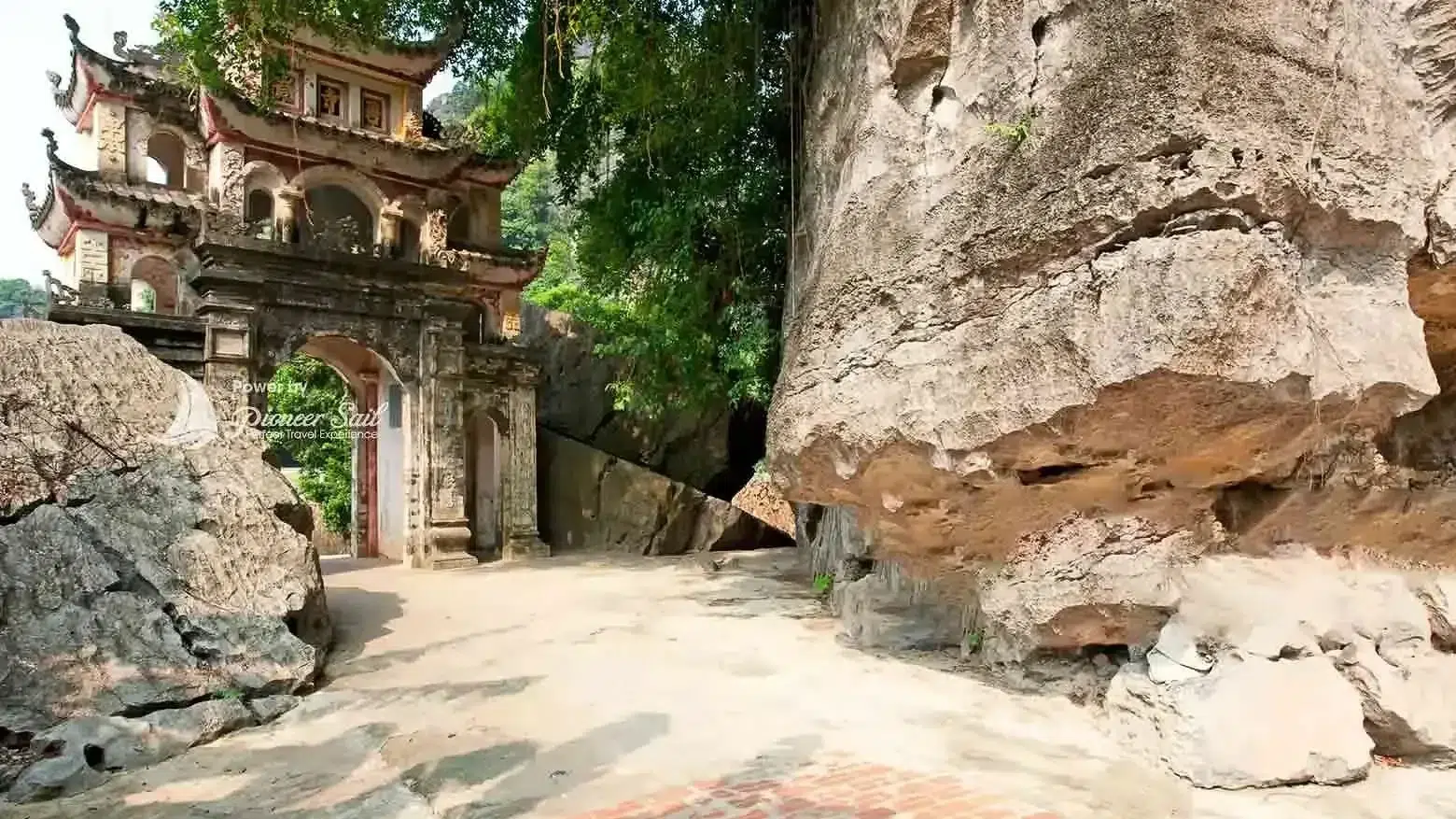
Just a short bike ride from Hoa Lu, Bich Dong Pagoda is an architectural marvel built into a limestone mountain. The pagoda consists of three levels, offering breathtaking views of the surrounding rice fields and rivers.
Pro Tip: Bring a water bottle and wear comfortable shoes—the climb is steep but worth it for the panoramic views.
Sample Local Cuisine and Explore Ninh Binh Markets
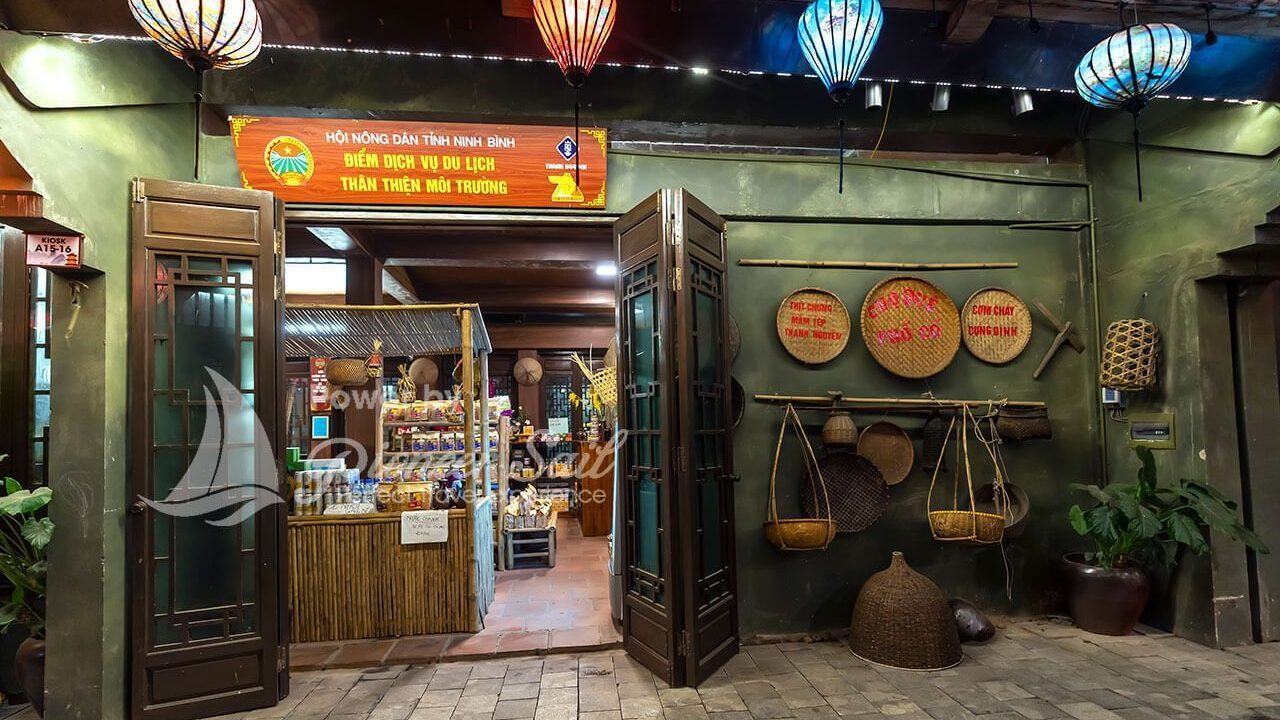
After a day of exploring, treat yourself to some local delicacies. Ninh Binh is famous for grilled goat meat and crispy rice crackers (com chay), which you can find at nearby markets or family-owned restaurants.
| Dish | Description | Price (USD) |
| Grilled Goat Meat | Tender and flavorful, served with herbs | 5-10 |
| Com Chay (Rice Cracker) | Crispy and savory, perfect as a snack | 2-3 |
Many travelers recommend visiting the markets early in the morning to experience local life and enjoy the freshest food.
FAQs – Your Questions Answered about Hoa Lu Imperial City
What are the Hoa Lu Imperial City opening times?
The site is open daily from 7:30 AM to 5:30 PM.
How do I get to Hoa Lu from Hanoi?
You can take a bus, motorbike, or private car, with travel times around 2 hours.
Is it possible to explore Hoa Lu Royal Palace on my own?
Yes, the site is easy to explore independently, though guided tours provide additional context and insight.
What’s the best time to visit Hoa Lu Imperial City?
Visit between October and April to enjoy the best weather and avoid heavy rains.
Why was the capital relocated from Hoa Lu to Thang Long?
In 1010 AD, Emperor Ly Thai To issued the Proclamation Relocating the Hoa Lu Capital to Thang Long to take advantage of better trade routes and military positioning.
Conclusion – Why Hoa Lu Imperial City Should Be on Your Travel List in 2024
Hoa Lu Imperial City is more than just a historical site—it’s a symbol of Vietnam’s origins, where ancient architecture, stunning landscapes, and cultural heritage converge. Exploring the royal palace, citadel ruins, and ancient temples offers a glimpse into the country’s early dynasties, while the surrounding limestone mountains and rivers create a breathtaking natural backdrop.
At Pioneer Sail Travel, we aim to help travelers experience Hoa Lu in a meaningful way. Whether you’re cycling through rice fields, sampling local delicacies, or paddling through water caves, every moment in Hoa Lu feels like stepping back in time.
Plan your journey today and let the legacy of the Hoa Lu Imperial City become part of your own travel story.
Tags:
hoa lu imperial city, hoa lu royal palace, hoa lu imperial city opening times, hoa lu imperial city times, proclamation relocating hoa lu capital to thang long, relocated hoa lu capital to thang long, ninh binh travel guide, tam coc tours, best time to visit hoa lu





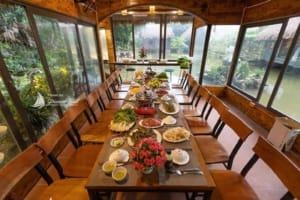








Recent Comments